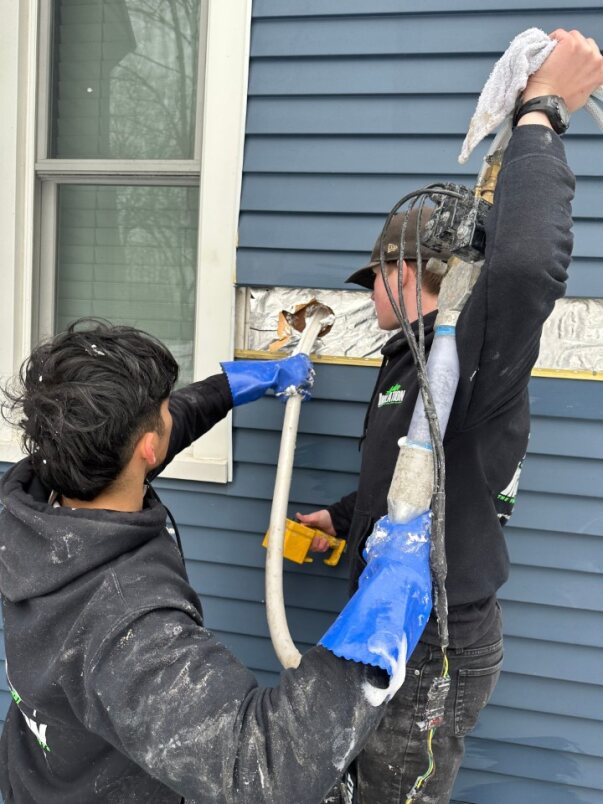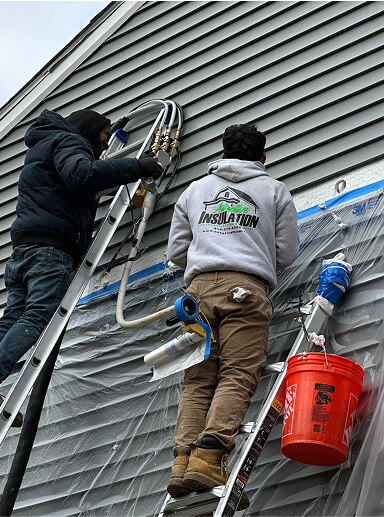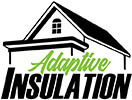Maximize Your Energy Efficiency:
How Homeowners Can Use the $1200 Federal Tax Credit to Reinsulate with Injection Foam by Adaptive Insulation
Maximize Your Energy Efficiency:
How Homeowners Can Use the $1200 Federal Tax Credit to Reinsulate with Injection Foam by Adaptive Insulation
With energy prices on the rise and a growing focus on environmental sustainability, homeowners are increasingly looking for ways to reduce their energy consumption and lower their utility bills. One of the most effective ways to improve energy efficiency in your home is by upgrading its insulation. To encourage homeowners to invest in energy-efficient home improvements, the U.S. federal government has introduced a tax credit of up to $1200 that can be applied to insulation upgrades, including injection foam insulation.
If you’ve been considering reinsulating your home, now is the perfect time to do it—and Adaptive Insulation, a leader in energy-efficient home insulation solutions, can help you take full advantage of the federal tax credit with their cutting-edge injection foam insulation. In this blog, we'll discuss how the $1200 tax credit works, the benefits of using injection foam insulation, and how Adaptive Insulation can help you upgrade your home’s insulation to maximize your savings.
Request a Free Home Estimate
Understanding the $1200 Federal Tax Credit for Insulation
The federal government offers several incentives for homeowners to make energy-efficient upgrades, with insulation improvements being one of the most accessible options. The Residential Clean Energy Property Credit (sometimes referred to as the Energy Efficiency Home Improvement Credit) allows homeowners to claim a tax credit of up to $1200 for qualifying home energy upgrades, including insulation.
A tax credit is a direct reduction of the taxes you owe, making it more financially advantageous than a tax deduction, which simply reduces your taxable income. This means that when you take advantage of the $1200 federal tax credit, you can significantly offset the cost of your insulation project, making it an excellent financial decision.

What Types of Insulation Qualify?
To qualify for the federal tax credit, the insulation materials and installation must meet specific energy-efficiency standards. Fortunately, injection foam insulation, which is one of the most innovative and effective insulation solutions available today, qualifies under these guidelines when installed correctly by a professional company like Adaptive Insulation.
How to Claim the Credit
Claiming the $1200 tax credit is a simple process:
- Schedule an Assessment with Adaptive Insulation to determine the right insulation solution for your home.
- Ensure the insulation products used meet the federal energy-efficiency standards.
- Keep documentation of your purchase and installation costs, which you will need to submit when filing your federal tax return.
- Claim the tax credit on IRS Form 5695 for Residential Energy Credits when you file your taxes.
What Is Injection Foam Insulation?
Injection foam insulation is a high-performance insulation solution designed to fill the gaps and cavities within your home’s walls, ensuring a complete thermal barrier. Unlike traditional insulation materials like fiberglass batts or blown-in cellulose, injection foam is injected into wall cavities and hard-to-reach areas, expanding to fill every nook and cranny. This seamless application ensures maximum insulation coverage, helping to significantly improve your home’s energy efficiency.
Injection foam insulation is especially beneficial for existing homes, as it can be applied without major structural changes. The foam is injected into the walls through small holes that are then patched up, making it a minimally invasive yet highly effective option for reinsulating your home.

Why Choose Injection Foam?
Here are some key reasons why homeowners choose injection foam insulation for their homes:
How Injection Foam Insulation Can Save You Money
Insulating your home with injection foam can lead to substantial long-term savings. Here are some ways in which you can save money by upgrading your insulation:


Why Adaptive Insulation Is the Best Choice for Injection Foam Insulation
When it comes to reinsulating your home, not all insulation companies are created equal. Choosing the right provider is crucial to ensuring that your insulation project meets the necessary standards for the federal tax credit and delivers the maximum energy savings. Here’s why Adaptive Insulation is the best choice for injection foam insulation:
How to Get Started with Adaptive Insulation
If you’re ready to take advantage of the $1200 federal tax credit and reinsulate your home with injection foam, the process is simple:
1. Contact Adaptive Insulation:
Reach out to their team to schedule a consultation. They’ll assess your home’s insulation needs and recommend the best solution.
2. Get a Custom Insulation Plan:
Based on their assessment, Adaptive Insulation will create a custom insulation plan tailored to your home’s unique layout and energy efficiency goals.
3. Schedule the Installation:
Once you’ve approved the plan, their team will handle the installation of your new injection foam insulation quickly and efficiently.
4. Claim the Tax Credit:
After the installation is complete, save your receipts and necessary documentation to claim the federal tax credit on your next tax return.
Reinsulating your home with injection foam insulation is one of the smartest investments you can make in terms of energy savings, comfort, and environmental impact. By taking advantage of the $1200 federal tax credit, you can significantly reduce the cost of your insulation upgrade while enjoying long-term benefits. Partnering with Adaptive Insulation ensures that you receive high-quality, tax-credit-eligible products and professional installation that will maximize your energy savings and comfort for years to come.
Don’t wait to make your home more energy-efficient—contact Adaptive Insulation today and start saving!
Get Started
Meet with one of our Home Assessment Professionals to learn how we can help your home be more comfortable and energy efficient this winter.
